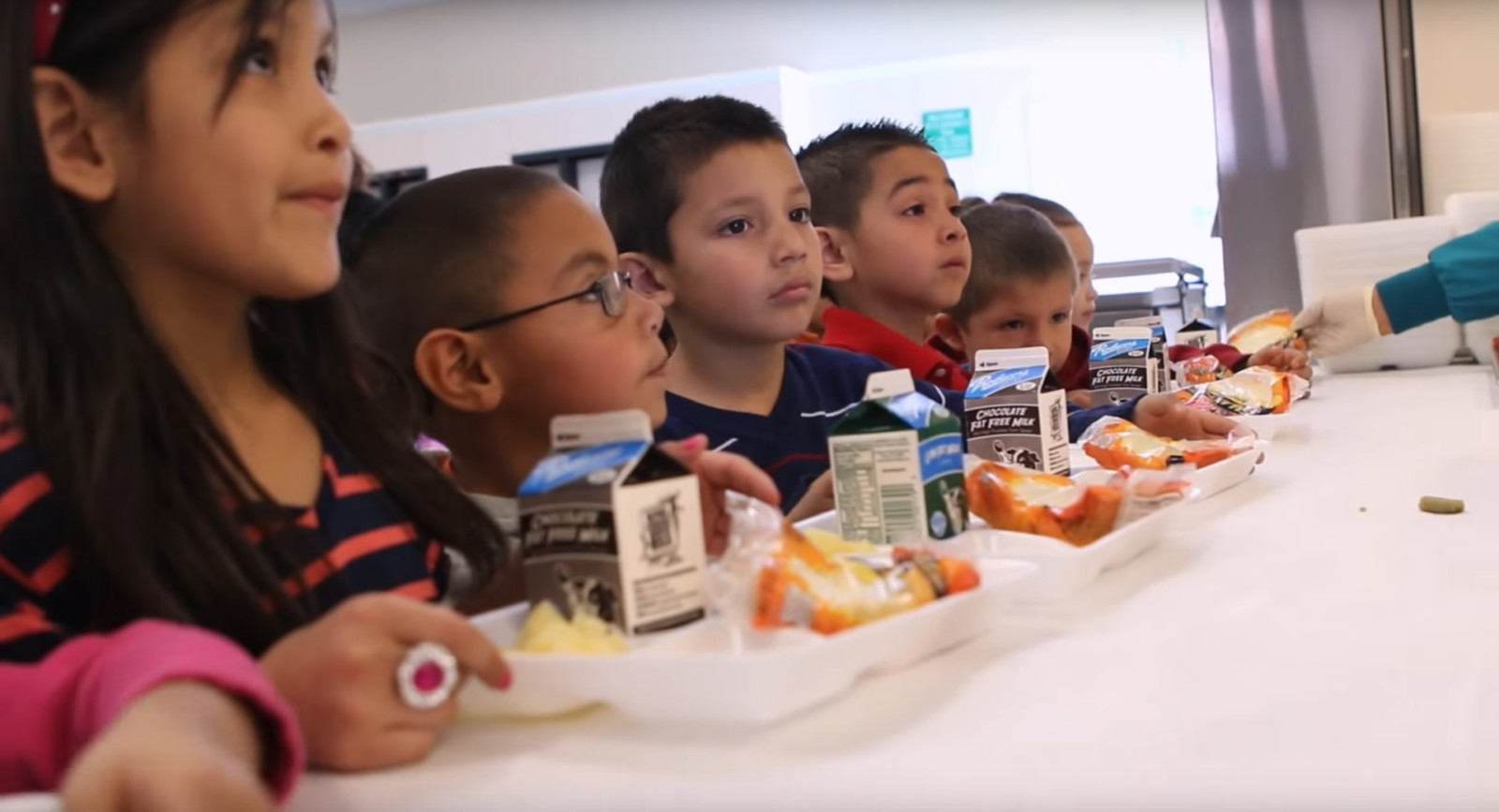
Share On Social!
A few years ago, Salud America! found that Latino students are exposed to more unhealthy food in and out of school than their peers. This contributed to poor nutrition and high rates of obesity.
Sadly, that situation still exists today.
Latino high-school students eat fewer fruits and vegetables and don’t eat breakfast daily as much as some of their peers, according to new data released in June 2018 from the CDC’s 2017 Youth Risk Behavior Survey.
The Data
The CDC’s Youth Risk Behavior Surveillance System monitors health-related behaviors. These behaviors usually develop during childhood and early adolescence and contribute to the leading causes of death and disability as well as social problems among youth and adults in the United States.
The CDC Youth Risk Behavior Survey is part of the surveillance system. It examines 121 health-related behaviors of high-schoolers.
Today we’re examining the data on nutrition.
What Does the Data Say about Latino Youth?
The CDC data revealed some bad news for Latino youth nutrition:
Vegetable consumption. About 40% of all high-school students are not eating one vegetable each day. The prevalence of not having eaten vegetables one or more times per day was higher among black (50.6%) and Latino (43.9%) students than their white peers (37.2%). Among youth who ate no vegetables at all, rates were higher among black (12.7%) and Latino (9.2%) students than their white peers (5.3%).
Daily breakfast. Not enough students are starting their day ready to learn. Only 35.3% of students eating breakfast every day. Latinos were most likely to not have breakfast at all. The prevalence of having breakfast every day of the week was higher for white students (38.1%) than black (28.7%) or Latino (31.7%) students.
There was some good news for Latino youth:
Fruit consumption. Fewer Latino youth report not eating fruit or 100% fruit drinks at all (5%), compared to their white (5.5%) and black (7%) peers. Latino youth also reported better rates of eating fruit or drinking fruit juice one or more times a day (62.4%) than their white (59.6%) and black (60.7%) peers.

Milk consumption. Experts are divided on the benefits of milk. Overall, high-school milk consumption is in decline. Only 31.3% of all youth drank one or more glasses of milk a day, down from 47.1% in 1999. Latino youth drank one or more glasses of milk a day (31.1%) more than their black peers (22.7), but slightly less than their white peers (34%).
Then there was mixed news:
Soda and water consumption. On the plus side, Latino youth reported lower rates of drinking soda one or more times a day (17%) than their white (19.6%) and black (21.5%) peers. On the down side, Latino youth reported lower rates of drinking water one or more times a day (73.4%) than their white peers (77.8%).
As these CDC data show, childhood and school nutrition still need improvement.
Latino Nutrition and Obesity
We already know that access to unhealthy foods, both in and out of school, is linked to obesity.
Furthermore, Latinos have more access than whites to unhealthy foods and drinks in school stores, snack lines, and vending machines. Latino students ate or drank 47 more “low-nutrient” calories per day than their peers.
According to the new CDC youth survey data, obesity and being overweight still remain high among Latino kids.
About one-third of students overall were obese or overweight. Rates were higher among Latino (38%) than white students (27%).
However, the prevalence of trying to lose weight was higher among Latino students.
What Can Be Done To Make Change?
There are many things schools can to do to help improve student nutrition:
- Schools can add Water Bottle Fountains. This gives kids much-needed access to safe drinking water throughout the school day. They help keep kids hydrated and healthy while saving families money from buying bottled water.
- Schools can start food pantries.
- Schools can add salad bars.
- Schools can start gardens.
The CDC recommends teaching and providing students with opportunities to improve their dietary behaviors with the hopes of establishing lifelong habits.
Learn more ways to improve Latino school health!
By The Numbers
142
Percent
Expected rise in Latino cancer cases in coming years



